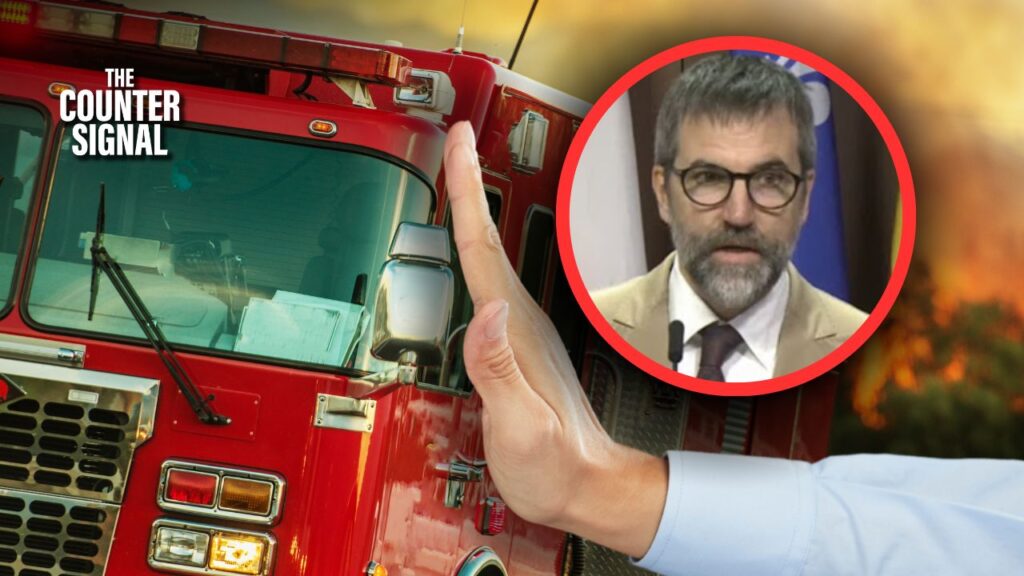Parks Canada, the federal agency overseen by Minister Steven Guilbeault, rejected help from qualified fire fighters and 20 fire trucks during the Jasper National Park wildfire that burned down one-third of the town, and 32,000 hectares of forest.

The agency also wouldn’t respond when asked how much deadwood remains in the park. Asked when they’d be able to provide an approximate number, a Parks Canada VP said she didn’t know.
Testifying on Monday was Kristopher Liivam from Arctic Fire Safety Services (AFSS), an Edmonton-based fire suppression and emergency response organization.
Liivam told committee members that Parks Canada actively obstructed them from helping out. He said 20 fire trucks and 50 firefighters from AFSS arrived at Jasper before a third of the town had burned down.
“We were also ordered to not fight fire,” he told the committee.
"We were denied access."
— Mike Campbell 🍁 (@Skeptical_Mike) October 7, 2024
Parks Canada, overseen by Climate Change Minister Steven Guilbeault, has already been caught discussing concern over 'media optics' of badly-needed controlled burns at Jasper National Park.
Now it's been revealed they turned down fire trucks and… pic.twitter.com/CJpIkFK8fs
Liivam said that his crews were told by Parks Canada that they weren’t legally allowed to be there to help.
Another revelation concerned the fire hydrants at the town of Jasper. Liivam said these hydrants were different than standard ones, preventing outside fire crews from having the tools to use them.
Wildfire investigation
Monday’s findings are the latest in a series of discoveries that have put Parks Canada and Climate Change Minister Steven Guilbeault’s competence under scrutiny.
Testimony last week had Minister Guilbeault, alongside Parks Canada officials, defending their handling of forest fire prevention and management of Jasper National Park. Guilbeault said that prescribed burns have been conducted for years, but failed to provide specifics on frequency, the number of burns in the past five years, or the total area covered.
On Monday, Conservatives MPs tried to grill down on these specifics, but failed to get clarity.
“I can’t answer a question at this time,” said Darlene Upton, Vice-President of Protected Area Establishment and Conservation for Parks Canada.
Canadians – and the people of Jasper – deserve to know how much dead pine remains.
— Branden Leslie (@BrandenCPC) October 6, 2024
I followed up, asking how long an assessment would take AND when the Committee could receive it.
They couldn't answer.
Unbelievable.
2/3 pic.twitter.com/rpkvqmjjni
Guilbeault blames climate change
A long-standing and well-known pine beetle infestation has turned many trees into potential fuel for fires. Documents reveal Parks Canada was informed in 2017 of the infestation and resulting tinderbox conditions in Jasper National Park.
Last week, Parks Canada CEO Ron Hallman stated that prescribed burns have been a practice in Jasper for at least the past seven years. However, when pressed for details on the scope and frequency of these burns over the vast 11,000 square kilometers of Jasper, he remained vague.
As big as the wildfire was, 97% of the park still stands.










Wow, the Feds refused 20 fire trucks and 50 private company firefighters from entering Jasper to fight the fire. Unbelievable! This Federal Government did not give a dam about the people of Jasper, just their own power control.
Jillbo is a serial liar, just like all his ilk. Justin lied, as usual , claiming Jasper was simply a “tree top fire” whatever tf that is. As if that somehow disproves the years of Justin’s climateers refusing proper forestry practices like controlled burns.